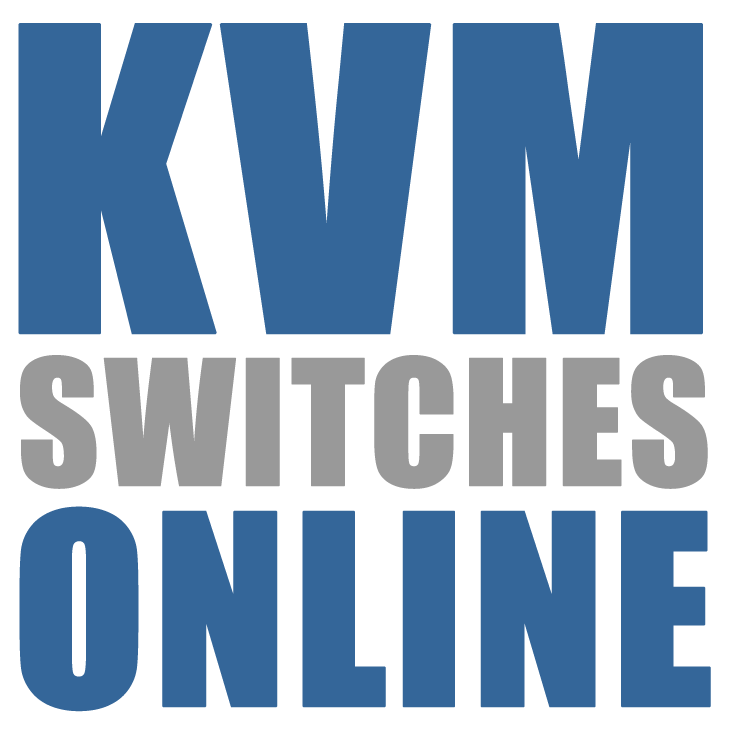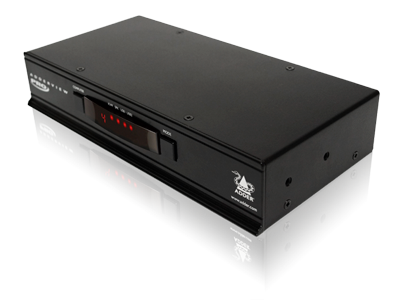
What is a KVM Switch?
A Keyboard-Video-Mouse (KVM) switch allows a user to control more than one computer with a single keyboard, mouse, and monitor user station (often referred to as a "console"). Users can manage and access thousands of computers or servers from a single "console". While selecting the best switch can be a difficult task, the professional staff at KVM Switches Online is here to assist you.
The KVM switching products we sell are from the industry's leading manufactures, and unlike some of our competitors, you can be sure that all items purchased on this site are new products, shipped in the manufacturer's original, unopened packaging.
Top Ten Considerations when Choosing Your KVM Switch

When choosing a KVM, there are many important things to keep in mind. Here are the top considerations when choosing your KVM Switch:
- Number of sources
- Number of users
- Video type
- Single or Multi-monitor
- Resolution and performance
- Support for audio
- Support for USB peripheral devices
- Digital vs. front-end IP switch
- Cat5 switches
- Distance requirements
- Security/authentication
- Integration of remote power management functionality
- Support for serial devices
- Bandwidth

Number of sources
- The number of KVM Ports determines the amount of source computers, servers, and other source devices such as KVM switches that you can connect to and access from a KVM Switch. Desktop Over IP solutions are also available with unlimited amount of source points.
Number of users
- When choosing a KVM Switch, you should consider how many users you want to be able to access the KVM Switch sources simultaneously. Multi-user KVM Switches are available that range from smaller 4-user switches able to handle dozens of servers, to integrated keyboard, video, mouse switching systems capable of allowing hundreds of administrators to control thousands of servers. Access points can include access locally from the KVM switch, extended remote access over CatX, or over-IP Web Browser / VNC Access. Multi-user KVMs allow you to store different user profiles with access rights for each user defined.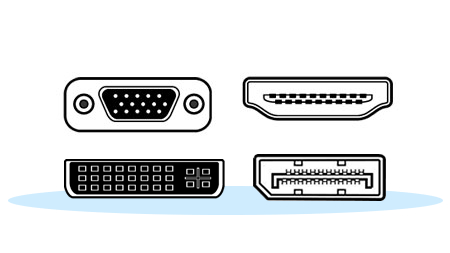
Video type
- KVM Switches can support a variety of Digital and Analog video connector types. Video support is dependent on the switch - some KVMs offer support for VGA, DVI, HDMI, and DP simultaneously, while others may only support VGA. Video adapters are also readily available for converting / adapting between different video types.- CatX (supports all below)
- HDMI
- DisplayPort
- DVI
- VGA
- USB-C
- Thunderbolt

Single or Multi-monitor
- KVM Switches are available in Single or Multi-monitor configurations. Control and switch between your Single-monitor, Dual-monitor, Triple-monitor, and Quad-monitor sources. Some KVM Switches can also be cascaded for 5-monitor, 6-monitor, 7-monitor, or 8-monitor applications. KVM-Over-IP and CatX KVM units are also available that allow you to group multiple sources to make a KVM Switch an unlimited amount of monitors. Alternatively, you can view multiple sources within one monitor using a MultiViewer KVM Switch, or create a command center video wall with a Keyboard/Mouse Switch.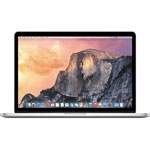
Resolution and performance
- Resolutions vary by device; Some KVM switches provide a maximum of up to 4K UHD at 60hz locally or over IP. If you have high resolution requirements, consider analog switches, as they provide a higher resolution than most digital products.
Support for audio
- Some switches provide audio support. For example, the Rose electronics UltraView Pro series will support audio switching for users and computers. For enterprise users, Raritan DKX3 devices provide multi-user switches that support audio functionality.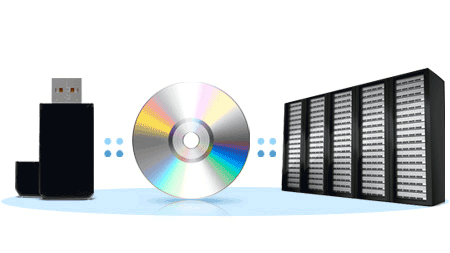
USB peripheral device hub
- Transparent USB peripheral device Hub ports on a KVM Switch allow you to connect any USB interface device including flash drives and other storage devices, graphics tablets, jog shuttles, joysticks, 3D explorers, and wireless bluetooth keyboards & mice* to any of the source computers connected to the KVM Switch. 'Virtual USB Media' functionality in IP KVM Switches also allows you to plug in USB devices remotely into sources from a web interface.
Digital vs. front-end IP products
- If you want to implement KVM-Over-IP - remote web access to your sources from anywhere in the world -, you can choose between pure digital applications or front-end ip products. A pure digital implementation uses digital keyboard, video, mouse switches. This network-based management approach allows administrators to gain bios-level access of the attached servers by communicating through the networked switch. Front-end ip products are positioned at the console of existing analog switches and permit remote users to gain secure access to an existing switch and attached servers.
High-density CatX switches
- Cat5/6/7 KVM Switches dramatically reduce desktop and server rack cable clutter and allow users and computers to be situated farther apart than they could be using standard cables. Cat5 switches also scale much larger on both the user and system sides, providing additional flexibility as your organization grows.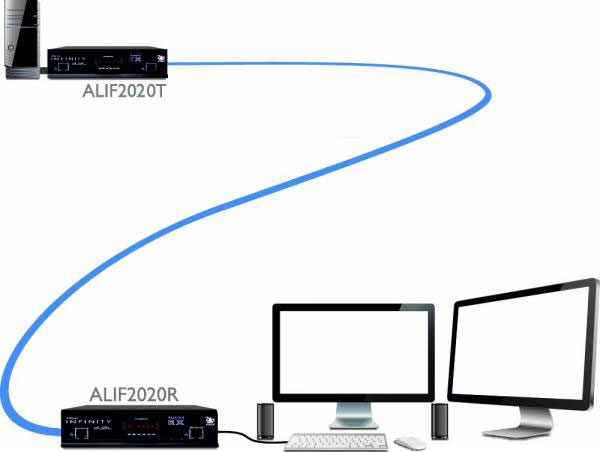
Distance requirements
- CatX KVM Switches offer longer connection distances over standard KVMs by using compact CatX cable KVM source dongles, and in some cases CatX User Stations. KVM-over-IP solutions also allow a user to access a server from unlimited distances. KVM sources and access can also be separately extended using KVM Extenders or IP KVM Gateways. The maximum distance with a Cat5 KVM Extender varies; Some higher-end analog Cat5 extenders allow users to be up to 1,000 feet away from the servers. For the greatest distances, consider Fiber KVM Extenders which can extend access over distances of six miles or more.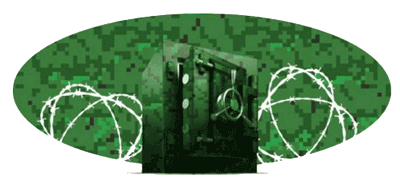
Security / authentication
- Most IP devices allow an administrator to leverage existing authentication schema such as LDAP, Active Directory, RADIUS, or TACACS+. NIAP-certified Secure KVM Switches are also available for highly secure classified government and enterprise applications.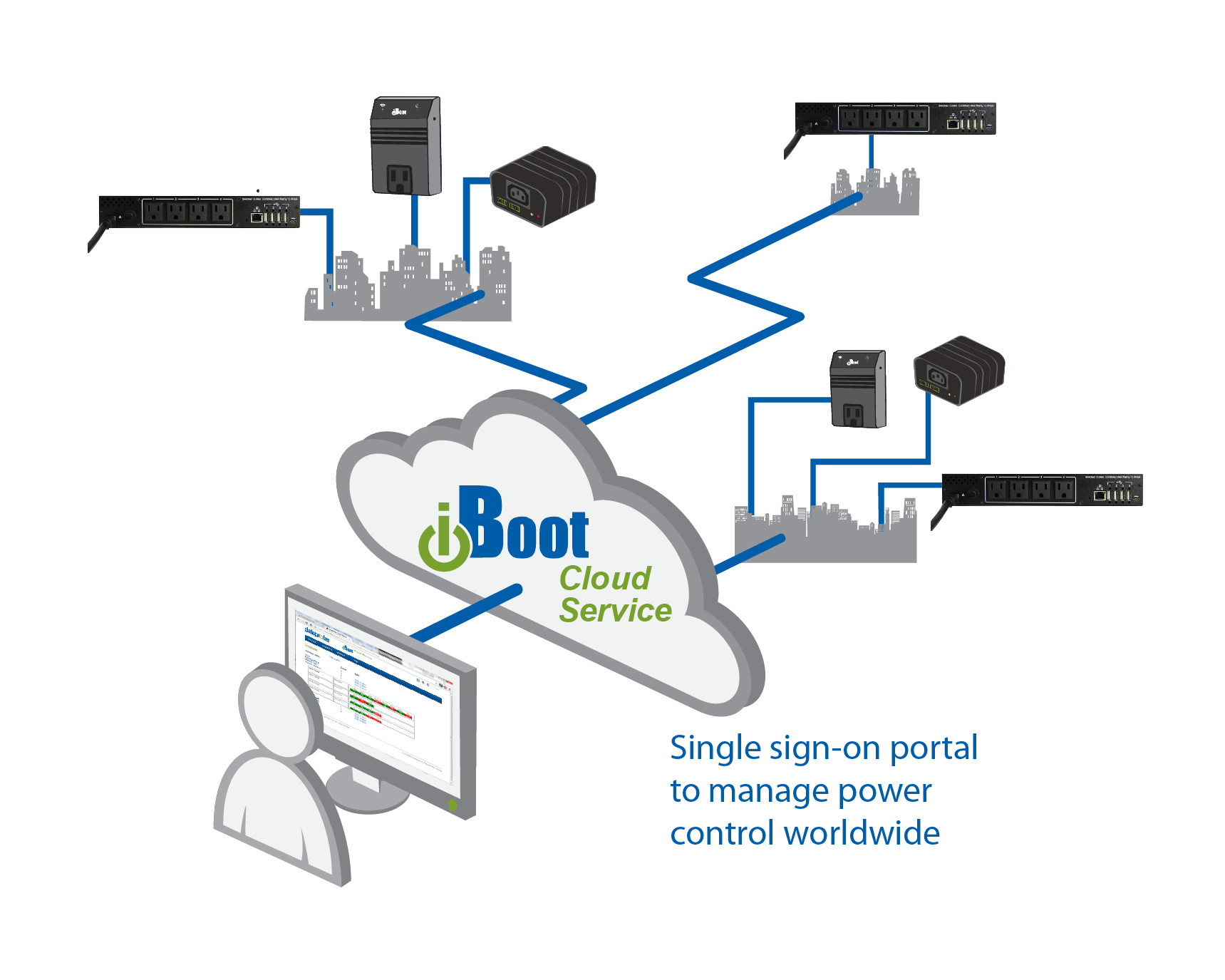
Integration of remote power management functionality
- By integrating a Remote Reboot device, administrators can cycle power to a server from a user station or an internet browser from any location worldwide. Integrated power management solutions allow users to control keyboard, video and mouse switching and remote reboot management from the same user interface. Enterprise-level solutions such as server technology's line of remote power management products provide multiple options for 3-phase or 208 power.
Support for serial devices
- Some high-end enterprise solutions provide support for serial devices (routers, headless unix, etc.). Avocent and Raritan devices provide support for serial devices through the use of dongles. Rose Electronics' devices provide serial support at the switch level and can support serial devices through coax cables.
Bandwidth
- Bandwidth requirements will vary significantly depending on the graphic intensity of the application you are using. Most compression technologies use differentials, sending only the changes that appear on a screen to update the user screen

